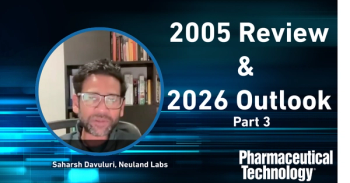
- Pharmaceutical Technology July August 2025
- Volume 49
- Issue 6
- Pages: 8
The Future of Pharma: Connected, Continuous, and Compliant
Key Takeaways
- Pharmaceutical success relies on integrating systems, data, partnerships, and people, moving towards shared risk and long-term collaboration.
- Innovations in ocular drug delivery and sustained-release technologies improve compliance and outcomes in eye care.
Pharma manufacturing is headed toward smarter tools, deeper partnerships, and a renewed focus on compliance and quality at every stage of the product lifecycle.
As you read this note, pharmaceutical development and manufacturing are being redefined by collaboration, innovation, and the urgent need for agility. The throughline across this issue of Pharmaceutical Technology® is unmistakable: success now depends on integration of systems, data, partnerships, and people.
Our cover story, “Customizable Relationships Enhance Speed to Market,” underscores this reality. As drug modalities become more complex, sponsor companies and CDMOs are moving away from traditional, transactional relationships. The new model is one of shared risk and long-term collaboration, driven by mutual investment in speed, quality, and innovation.
This spirit of innovation is reflected in the development space, where ocular drug delivery continues to challenge formulation scientists. As Cynthia Challener reports in “Advanced Solutions for Sustained Delivery of Ocular Therapies,” sustained-release technologies for eye care are gaining traction, improving compliance and outcomes in an area in which frequent dosing has long been a barrier.
“In-line UV Spectrometry Monitoring in Cleaning Validation” offers a timely look at how Pharma 4.0 principles are reshaping validation. The integration of in-line analytical tools enables real-time monitoring, greater data reliability, and stronger alignment with quality-by-design and digital manufacturing goals.
On the analytics front, “Overcoming PK/PD Modeling Challenges” explores how AI and machine learning are transforming PK/PD modeling. These tools enable faster, more accurate predictions of drug behavior, helping teams avoid costly delays and unnecessary experimentation.
We also examine the realities of small-batch fill/finish operations, including the technologies and process solutions emerging to meet the demands of low-volume, high-value production.
Finally, in “ICH Q12 and Post-Approval Changes,” Siegfried Schmitt sheds light on why streamlined post-approval change management remains elusive, and why it’s crucial for maintaining supply resilience.
Taken together, these articles offer a clear view of where pharmaceutical manufacturing is headed: toward smarter tools, deeper partnerships, and a renewed focus on compliance and quality at every stage of the product lifecycle.
About the author
Mike Hennessy Jr is Chairman and CEO of MJH Life Sciences®.
Article details
Pharmaceutical Technology®
Vol. 49, No. 6
July/August 2025
Page: 8
Citation
When referring to this article, please cite it as Hennessy, M. The Future of Pharma: Connected, Continuous, and Compliant. Pharmaceutical Technology 2025 49 (6).
Articles in this issue
6 months ago
Overcoming PK/PD Modeling ChallengesNewsletter
Get the essential updates shaping the future of pharma manufacturing and compliance—subscribe today to Pharmaceutical Technology and never miss a breakthrough.




